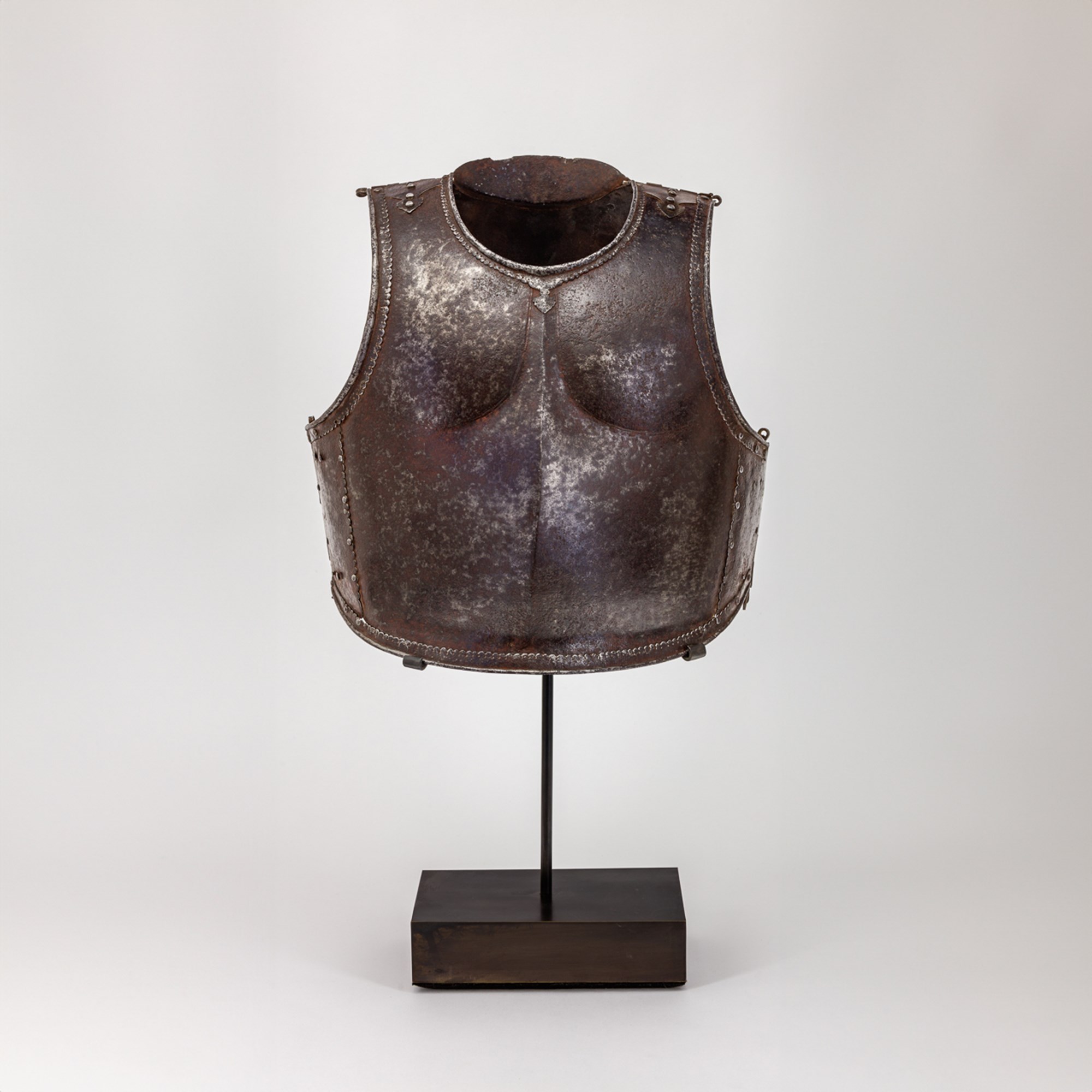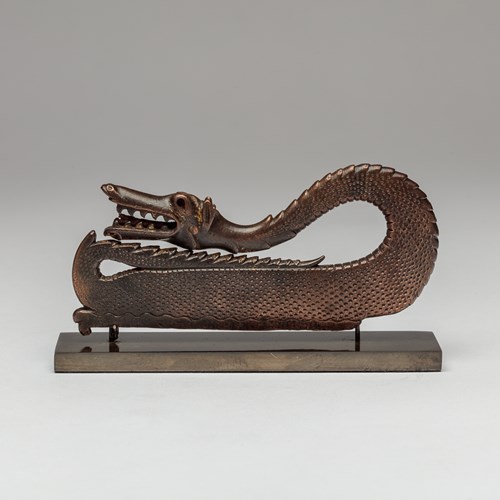Marketplace
Deccani Cuirass
This watered steel cuirass originates from Hyderabad, in the Deccan region of South India. The breastplate and backplate attach at the shoulder with a hinge. Their form, resembling a man’s torso with a raised mid-seam, suggests that inspiration was taken from contemporaneous European cuirasses, reflecting a fashion for European items amongst Indian nobility. A raised collar protects the back of the neck. The neck and armholes are edged with rounded rims, and a raised scalloped border decorative with punched dots. Palmettes emerge from the border at the centre of the neck and each shoulder. On the upper-left side of the breastplate is an incised Persian inscription, now illegible. However, several similar cuirasses are inscribed in the same position with the name ‘Sarkar Mir Nizam ‘Ali Khan Bahadur’, who ruled as Nizam of Hyderabad between 1762 and 1803 under the name Asaf Jah II. The example in the Khalili Collection, London (no. MTW 1157), features this inscription, whilst the example in The Metropolitan Museum of Art, New York (accession no. 29.158.165a,b), is also dated 1192 AH (1778/9 CE) alongside the inscription.
It is presumed that these cuirasses come from the former Hyderabad arsenal, as some have old inventory numbers. That many of them bear the same date suggests that they were commissioned in bulk, perhaps for Hyderabad State Forces or the Nizam's personal bodyguard.1
1 Alexander, David G. (et al.). Islamic Arms and Armor in The Metropolitan Museum of Art. New York: Metropolitan Museum of Art, 2015. P. 53.
More artworks from the Gallery







_T638568988938247202.jpg?width=500&height=500&mode=pad&scale=both&qlt=90&format=jpg)
_T638772015617641557.jpg?width=500&height=500&mode=pad&scale=both&qlt=90&format=jpg)
